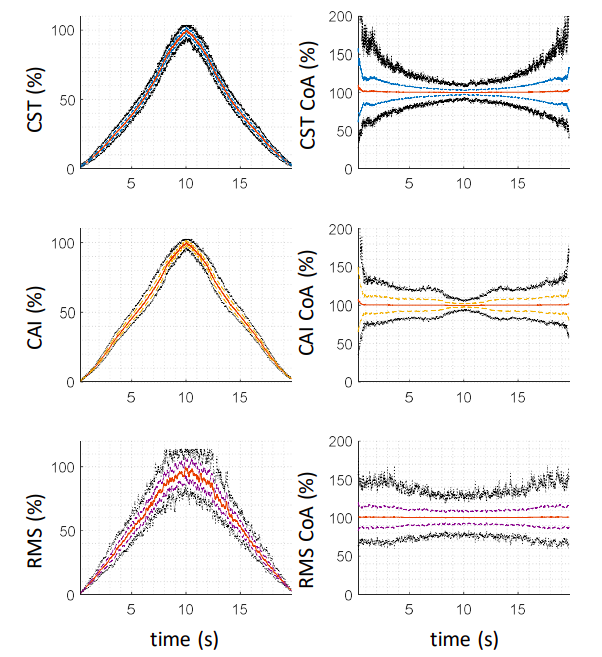
We evaluated different muscle excitation estimation techniques, and their sensitivity to Motor Unit (MU) distribution in muscle tissue. For this purpose, the Convolution Kernel Compensation (CKC) method was used to identify the MU spike trains from High-Density ElectroMyoGrams (HDEMG). Afterwards, Cumulative MU Spike Train (CST) was calculated by summing up the identified MU spike trains. Muscle excitation estimation from CST was compared to the recently introduced Cumulative Motor Unit Activity Index (CAI) and classically used Root-Mean-Square (RMS) amplitude envelop of EMG. To emphasize their dependence on the MU distribution further, all three muscle excitation estimates were used to calculate the agonist-antagonist co-activation index. We showed on synthetic HDEMG that RMS envelopes are the most sensitive to MU distribution (10 % dispersion around the real value), followed by the CST (7 % dispersion) and CAI (5 % dispersion). In experimental HDEMG from wrist extensors and flexors of post-stroke subjects, RMS envelopes yielded significantly smaller excitations of antagonistic muscles than CST and CAI. As a result, RMS-based co-activation estimates differed significantly from the ones produced by CST and CAI, illuminating the problem of large diversity of muscle excitation estimates when multiple muscles are studied in pathological conditions. Similar results were also observed in experimental HDEMG of six intact young males.

